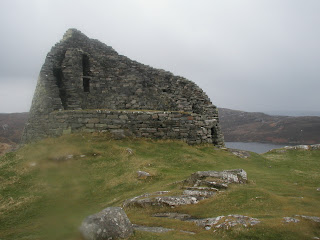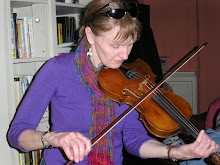


Day 14 Monday April 23
The last day of our tour we headed south from Fort William through the stunning scenery of Glencoe glen. A number of movies, including the 3rd Harry Potter, have used this area as a set. The tragic massacre of the MacDonalds of 1692 continues to give this area of natural beauty a tragic air. Much of the land in the glen is now owned and protected by the National Trust of Scotland.
Our last bit of nature before heading back to Glasgow was a stop on the shores of Loch Lomand where we learned that the well known song “The Bonnie Banks o Loch Lomond” was penned by a prisoner of the Jacobite campaigns before he was executed. He believed that his spirit, upon execution, would travel back the spirit world via the “low road” to the place of his birth, Loch Lomond, while his prison mate, who was to be set free, would have to walk back home to Loch Lomond. So this gives new light to these words: “You’ll take the high road and I’ll take the low road and I’ll be in Scotland afore ye. But me and my true love will never meet again on the Bonny bonny Banks of Loch Lomond.”
In Glasgow we visited the Burrell Collection, housed in a museum in Pollok Park. Sir William Burrell amassed great wealth in the shipping business and spent his money on collecting artwork from all over the world. There are many tapestries in the collection. Here is what one of the travelers said about them. “They were magnificient. Our tour guide really got us looking at them and understanding them. We went to the embroidery collection and it was also just as wonderful.” Entry to the museum is free and if weather allows, walking around the park which has a large herd of Highland cattle, flowers, trees, is a green peaceful retreat in the middle of the city.
You may wonder how we learned all these wonderful facts. Our coach driver from Rabbies Trail Burners, Richard, is a walking encyclopedia of knowledge on the history of Scotland. He drove us 1692 miles around the country and was still smiling at the end. You can see him pictured with "wee Carol" in the trip photos for the day. www.rabbies.com
The last stop of the trip was Glasgow School of Art. The last stop of the trip was Glasgow School of Art. A tour guide showed the wonderful architecture of Charlies Renne Mackintosh. His design won a competition to design the school. It was built in 1897 and finished in 1909. The library is particularly memorable with dark wood walls, floor and furniture, art nouveau light fixtures, book shelves and desks. Of the many Mackintosh buildings open to visitors today in Glasgow, the art school is a must see structure. Mackintosh was an artist’s artist. In his words:
“The artist may have a very rich psychic organization—an easy grasp and a clear eye for essentials - a great variety of aptitudes—but that which characterises him above all else—and determines his vocation—is the exceptional development of the imaginative faculties— especially the imagination that creates—not only the imagination that represents. The power which the artist possesses of representing objects to himself explains the hallucinating character of his work—the poetry which pervades them—and their tendency towards symbolism—but the creative imagination is far more important. The artist cannot attain to mastery in his art unless he is endowed in the highest degree with the faculty of invention." –C.R. Mackintosh
I played “ A Boy’s Lament for his Dragon” on fiddle for the group today as my farewell. This tune is sweet and sad at the same time, and that is how I feel about the end of the tour. How do I summarize 2 weeks on the road in search of threads, ruins, and tunes? We had no major illness, mishaps, no one left behind, and more sunshine that one could ever possibly hope for than springtime in Scotland. Richard, our coach driver and guide couldn't have been better. It was wonderful to share the best of the sites, places, and people I had met on 4 previous trips to Scotland with the 15 travelers on this tour. Some were seasoned travelers, having been to Scotland numerous times. For others this was their first venture out of the U.S.
Travel is a wonderful teacher. We leave our framework of our normal, everyday lives, and are thrust into a culture, which may not seem so different from our own. But as we talk, eat, ride on ferries, visit museums, breath in deeply, we learn in subtle and sometimes not so sublte ways, that every culture has unique things they offer to the world. Scotland has always offered her friendly people and welcoming nature to me and I believe my travelers felt this too.
We fly back home and leap back into our lives, but we are not the same. Our being has been touched and changed. I always come home so thankful for the affordable food, fuel and energy we are privileged to have in the states. And I’m reminded to give back the hospitality to visitors in our communities and homes that we received in Scotland. Thank you for blogging along on this journey. If your interest has been peaked, I invite you to come along next year.



















































